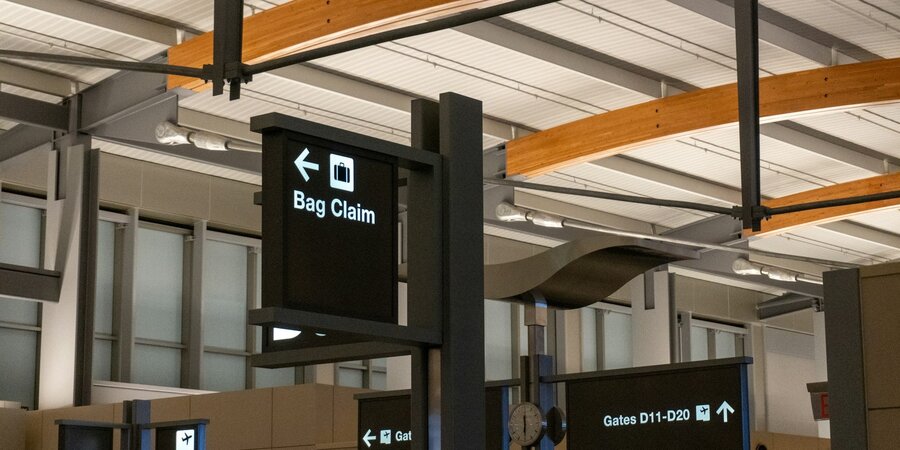Aviation Law
January 20th, 2025
The Montreal Convention (MC) of 1999 forms one of the central foundations of international law in international air transport. Among other things, it regulates the liability of air carriers in the event of damage to passengers, baggage and cargo as well as delays. In accordance with Article 24 (1) of the MC, the liability limits set out in the MC are regularly reviewed and, if necessary, adjusted to take account of inflation and economic developments. This article examines the development of the liability amounts since the beginning of the Convention, provides an overview of the newly adjusted applicable amounts and analyses shortly the effects of the adjustments on the aviation industry.
1. The Montreal Convention and its liability rules
The Montreal Convention was introduced to create uniform rules for the liability of air carriers and to modernise the Warsaw Convention of 1929, which had been in force until then. The focus was primarily addressed to
Article 17: Liability for death or personal injury of passengers.
Article 18: Liability for loss, damage or delay of baggage and cargo.
Article 19: Liability for delays.
Article 21: No limits of liability for proven fault.
Article 22: Fixed limits of liability for baggage and cargo.
Where liability limits are provided for, these are specified as maximum amounts in so-called Special Drawing Rights (SDRs). This is an international currency unit of the International Monetary Fund (IMF) to minimise exchange rate risks. The SDRs comprise the US-Dollar, Euro, Chinese Yuan, Japanese Yen and British Pound Sterling. They are calculated daily and can be accessed on the IMF website under SDR Valuation.
The liability limits of the MC have been adjusted several times since it came into force in 2004. In accordance with Article 24 (1) sentence 1 of the Convention, a review is carried out every five years to determine whether an adjustment is necessary. This review is based on the change in the World Consumer Price Index (CPI):
a) Limits of liability upon entry into force (2004)
– Death or personal injury (Article 21): 100,000 SDR.
– Damage, loss or delay of baggage (Article 22(2)): 1,000 SDRs.
– Damage caused by delay (Article 22(1)): 4,150 SDRS.
– Loss of or damage to cargo (Article 22(3)): 17 SDRs per kilogramme (damage or loss).
b) First adjustment of the liability limits (2009)
The amounts were adjusted following the review in 2009:
– Death or bodily injury: 113,100 SDRs
– Baggage: 1,131 SDRs.
– Delay: 4,694 SDRs
– Cargo: 19 SDRs per kilogramme.
c) Second adjustment of the liability limits (2019)
The next adjustment was made in 2019, with the following amounts coming into force
– Death or personal injury: 128,821 SDRs.
– Baggage: 1,288 SDRs.
– Delay: 5,346 SDRs
– Cargo: 22 SDRs per kilogramme.
d) Current adjustment of the liability limits at the end of 2024
Following the last review and increase at the end of 2019, the ICAO had requested the 140 contracting states to implement the next increase by 28 December 2024 in accordance with Art. 24 para. 1 sentence 1 of the MC. Germany has complied with this request. The Third Ordinance on the Entry into Force of the Adjusted Maximum Liability Amounts of the Montreal Convention was published in the Federal Law Gazette on 23 December 2024. The amounts have been increased as follows
– Death or personal injury: 151,880 SDRs.
– Baggage damage and baggage delay damage: 1,519 SDRs
– Delay: 6,303 SDRs.
– Cargo: 26 SDRs per kilogramme.
2. Effects of the adjustments on practice
For calculating the limits of the amount of damages, the version of the MC is decisive which was in force when the damage occurred. The regular adjustments to the liability limits mean potentially higher financial burdens for airlines. The total liability claims can increase significantly, particularly in the event of mass damage, for example due to aircraft accidents. However, most airlines seek protection by having respective insurance policies, for which the premiums are rising accordingly.
For passengers, the higher liability limits mean improved protection. In the event of loss or damaged baggage, the amount of compensation is now significantly higher than at the beginning of the MC. The increased liability limit also ensures more appropriate compensation in the event of bodily injury.
The insurance industry faces the challenge of integrating the growing liability amounts into its policies. This may lead to an increase in premiums, which could have an indirect impact on ticket prices.
3. Challenges
The regular adjustment of liability limits in the Montreal Convention is an important mechanism to ensure the relevance of the regulations in a dynamic economic environment. However, this poses various challenges:
Air carriers will need to proactively manage the adjustment of insurance policies. Furthermore, this could lead to the development of innovative insurance solutions. In addition, the new liability regulations should be communicated transparently to passengers.
For the legislator, the provisions of the MC mean that the economic impact of the adjustments should be continuously monitored. It must also be ensured that the new amounts of the MC are in line with other international conventions.
Conclusion
The adjustment of the liability amounts in the MC is a dynamic instrument that could be regarded as benefit to both passengers and airlines. The continuous increase in the amounts not only reflects economic realities, but also demonstrates the endeavour to make international air transport fair and transparent. However, it should also be emphasised that not all states implement the adjustments promptly, which can lead to legal uncertainties. Finally, the increase in liability costs is a factor that can place an excessive burden on financial resources.



